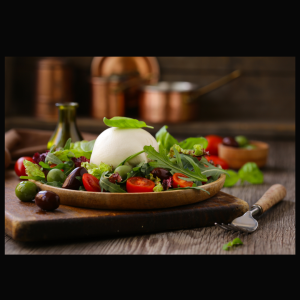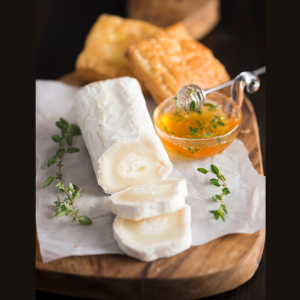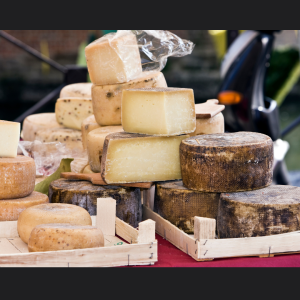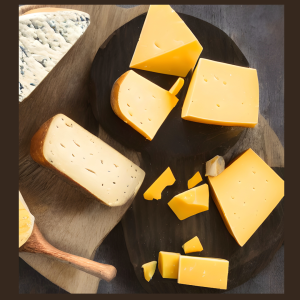Hola Friends!
Well, this is the second part of our cheese blog!
I hope you enjoyed the first part and that you have already tried them. Well, it turns out that this path that I have traveled to bring you the necessary information so that you become experts on the subject has been very interesting and it is not over yet.
It turns out that I still had to leave out some other cheeses, but hey, that’s life! You have to learn little by little and gather more information along the way.
So I leave you with the following cheeses hoping that it will enrich you and make you want to try more and more!
Mozzarella
 Is a southern Italian cheese traditionally made from Italian buffalo’s milk by the pasta filata method. Mozzarella starts like many other cheeses, with rennet used to curdle the warm milk. Unlike other cheeses, however, the fresh mozzarella curds are plunged into hot whey or lightly salted water, kneaded, and pulled to develop the familiar stretchy strings (pasta filata), then shaped.
Is a southern Italian cheese traditionally made from Italian buffalo’s milk by the pasta filata method. Mozzarella starts like many other cheeses, with rennet used to curdle the warm milk. Unlike other cheeses, however, the fresh mozzarella curds are plunged into hot whey or lightly salted water, kneaded, and pulled to develop the familiar stretchy strings (pasta filata), then shaped.
Fresh mozzarella is generally white but when seasoned it turns to a light yellow depending on the animal’s diet. Due to its high moisture content, it is traditionally served the day after it is made but can be kept in brine for up to a week or longer when sold in vacuum-sealed packages. Low-moisture mozzarella can be kept refrigerated for up to a month, though some shredded low-moisture mozzarella is sold with a shelf life of up to six months .
Mozzarella is used for most types of pizza and several pasta dishes or served with sliced tomatoes and basil in Caprese salad. Or simply pair it with a Provence Rosé Wine.
Although the mozzarella is said to be made from buffalo milk, there are also mozzarellas made from cow’s milk (from what I understand this is the one sold in the US, Fior di latte is made from fresh pasteurized or unpasteurized cow’s milk and not water buffalo milk, which greatly lowers its cost.) They also make it from sheep’s milk and goat’s milk. Although the latter only exists in a few small places.
Burrata Cheese
 Is an Italian cow milk (occasionally buffalo milk) cheese made from mozzarella and cream.The outer casing is solid cheese, while the inside contains stracciatella and cream, giving it an unusual, soft texture. It is typical of Apulia.
Is an Italian cow milk (occasionally buffalo milk) cheese made from mozzarella and cream.The outer casing is solid cheese, while the inside contains stracciatella and cream, giving it an unusual, soft texture. It is typical of Apulia.
Burrata starts out much like mozzarella and many other cheeses, when making burrata, the still-hot cheese is formed into a pouch, which is then filled with the scraps of leftover mozzarella and topped off with fresh cream before closing.The finished burrata is traditionally wrapped in the leaves of asphodel, tied to form a little brioche-like topknot, and moistened with a little whey. The asphodel leaves should still be green when the cheese is served to indicate the cheese’s freshness. More recently, the cheese is often sold in a plastic bag or container, sometimes stored in liquid.
When the burrata is sliced open, the thickened stracciatella flows out. The cheese has a rich, buttery flavor and retains its fresh milkiness. This cheese is best when you eat it within its first 24 hours and after 48 hours it is considered that its best moment has passed. Thanks to its flavor and differing textures inside and outside, it goes well with salad, prosciutto, crusty bread, fresh tomatoes with olive oil, cracked black pepper, or pizza, pasta, and chili.
This cheese makes a very good parity with a Greco Di Tufo Wine.
Chevre Cheese or Goat Cheese
 This cheese is made from Goat Milk. And as a curious fact the goats were among the first animals to be domesticated for producing food. Goat cheese has been made for at least as far back as 5,000 B.C. Meanwhile, the first documented proof of humans making cheese is 7,500 years ago in Poland.
This cheese is made from Goat Milk. And as a curious fact the goats were among the first animals to be domesticated for producing food. Goat cheese has been made for at least as far back as 5,000 B.C. Meanwhile, the first documented proof of humans making cheese is 7,500 years ago in Poland.
Goat cheese is made around the world with a variety of recipes, giving many different styles of cheese, from fresh and soft to aged and hard.
Interesting, right? And this cheese turns out to be something like the opera the first time someone hears it… either you love it or you hate it!
This cheese actually takes you to the extreme. It is always good to accompany it with something that makes the flavor lighter.
This cheese is manufactured in almost the entire world, so it would be very difficult to list each one of them. But it might be an excellent idea to start with the local goat cheeses.
Maybe this is not my favorite cheese but I do like it in a salad with mixed greens, caramelized pecans and a light dressing and obviously crumbled goat cheese. This cheese can be paired with Sauvignon Blanc.
Fontina Cheese
 Fontina is a cow’s milk cheese, first produced in Italy. Over time, production of Fontina has spread worldwide, including the United States, Denmark, Sweden, Canada, France and Argentina
Fontina is a cow’s milk cheese, first produced in Italy. Over time, production of Fontina has spread worldwide, including the United States, Denmark, Sweden, Canada, France and Argentina
Fontina is a cheese that is semi soft to hard in texture and mild to medium-sharp in flavor. It has a milk fat content around 45%. The characteristic flavor of Fontina is mild but distinctively nutty and savory. Fontinas from Sweden, Denmark, and the United States have milder flavor, softer texture, and more holes than those of Italy.
When Fontina is younger it melts very well, so it can be used in any recipe where you want a smooth, melty cheese, like fondue, cheese dip or cheese sauces. Casseroles of course mac and cheese, pizza, grilled cheese sandwiches, frittatas and baked stratas will all benefit from Fontina’s gooey meltiness.
Mature Fontina is harder, and can be grated over soups, pasta dishes, rice and risotto, vegetables and salads.
And of course we can put this cheese on a cheese board and pair it very well with Chenin Blanc.
Cheddar Cheese
 Cheddar is a natural cheese that is relatively hard. Cheddar originates from the English village of Cheddar in Somerset. Cheddar cheese originates from the village of Cheddar in Somerset, southwest England.
Cheddar is a natural cheese that is relatively hard. Cheddar originates from the English village of Cheddar in Somerset. Cheddar cheese originates from the village of Cheddar in Somerset, southwest England.
During the manufacture of cheddar, the curds and whey are separated using rennet, an enzyme complex normally produced from the stomachs of newborn calves (in vegetarian or kosher cheeses, bacterial, yeast or mold-derived chymosin is used).
Yellow, orange or white cheddar cheese has its color depending on what the cow eats.
Usually this yellow cheddar cheese is used for hamburgers, grilled sandwiches, etc.
But of course we can use it for our cheese boards, just choose a good brand and the age you like, remember that the younger the cheeses are creamier and as they age they become harder.
This cheese can be paired with a good Chardonnay.
Parmesan Cheese

Well, there is not much to say about this cheese, since it is a protected brand in original Parmesan cheese. You can only try it in Italy and Europe and you will find it with its full and original name “Parmigiano Reggiano”. Otherwise if you eat outside these areas you will only find cheeses with the simple name “Parmesan”. This does not mean that you cannot consume a good Parmesan cheese, the fact is that they are protected designations of origin (PDO) for cheeses produced in these provinces under Italian and European law.
So when you buy a Parmesan cheese you are buying a similar brand lol. It makes me laugh since I imagine going to the pharmacy for a recommended medicine and it is in $$$ and I see the similar brand in $$ and I take the similar brand ?.
Returning to the cheese, of course we don’t have a choice! But obviously if you travel to Italy don’t forget to try it and tell us about your experience.
As we already said the Country of origin is Italy in the Emilia-Romagna Region
Source of milk Cows (mostly Friesian and Reggiana cattle)
Not Pasteurized.
Texture Hard
Aging time Minimum: 12 months
Age: 18–24 months
Stravecchio: 24–36 months
You will find this cheese in salads, dressings, appetizers, etc. But as far as we are concerned you can add it to your cheese board and you can pair it with a good Chianti Wine.
Well, for now we finished this second part for cheese lovers and I hope you liked it and find it useful. Sadly we left out a few more cheeses and the list is long. But I think we’ve covered most of it. Don’t forget that several of these cheeses are also produced locally and they really are delicious, so if you have the time to visit our local farms and try the delicious cheeses they make, they also have cheese tastings and sometimes offer to pair them with local wines as well. .
Anyway it was a pleasure for me to do this research for you. Without further ado, I say goodbye for the moment and I hope to write to you soon!
Gracias ❤️

By Pastry Chef Rocio Navarrete
